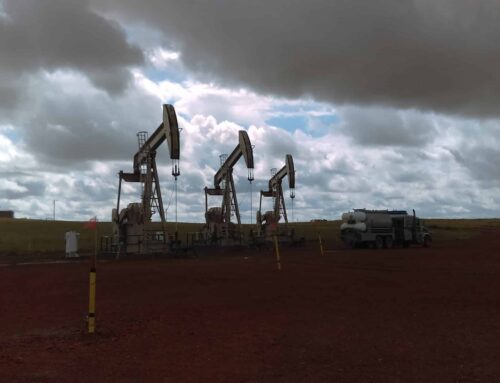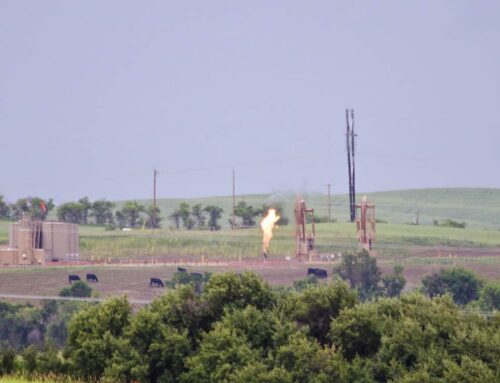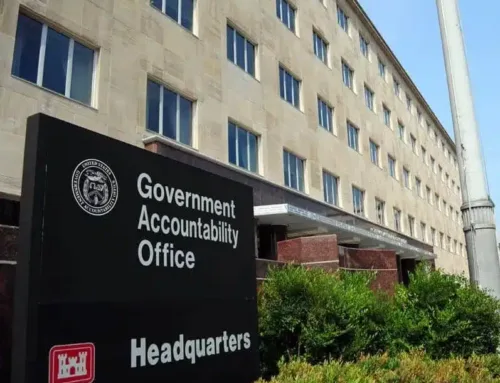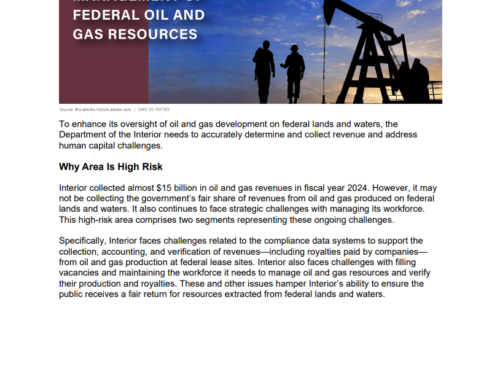View/Download this article in PDF format.
1. What is the purpose of the DOE Loan Guarantee Program?
According to statute, the Department of Energy (DOE) Loan Guarantee Program provides loan guarantees for “innovative” technologies.”
2. When was the program created?
Although early iterations of the program date back to 2003, the DOE Loan Guarantee Program was not enacted into law until the Energy Policy Act of 2005. Originally the program provided loan guarantees only for nuclear reactors, but was expanded to other energy sectors before final passage in 2005. The loan guarantee program is often referred to as the Title 17 program because it was authorized in Title 17 of the bill.
3. What is a loan guarantee?
Federal loan guarantees allow borrowers to receive a privately financed loan with the federal government assuming the risk. Put simply, a loan guarantee provides its recipient with the backing of the U.S. Treasury if their privately financed loan defaults. The federal government effectively cosigns a loan for a private industry endeavor. In the case of the DOE Loan Guarantee Program, the federal government can take responsibility for up to 80 percent of a qualified energy project’s cost. The DOE Loan Guarantee program is one of dozens of federal credit programs that use direct loans, loan guarantees, and other forms of credit support.
4. What types of projects can apply to receive loan guarantees through the program?
To qualify for the program, a project must “avoid, reduce or sequester air pollutants or greenhouse gases; employ new or significantly improved technologies and provide a reasonable prospect of repayment.”
The following is a list of DOE Solicitation Dates for qualified energy projects:
· Front-end Nuclear (Uranium Enrichment) Facilities – July 2008
· Nuclear Power Facilities – July 2008
· Fossil Energy Advanced Technologies – September 2008
· Energy Efficiency, Renewable Energy, Advanced Transmission and Distribution Technologies – October 2008
· Transmission Infrastructure Investment Projects – July 2009
· Energy Efficiency, Renewable Energy, Advanced Transmission and Distribution Technologies – July 2009
· Financial Institution Partnership Program – Commercial Technology Renewable Energy Generation Projects – October 2009
· Projects that Manufacture Commercial Technology Renewable Energy Systems and Components – August 2010
5. The loan guarantee program is often referred to as either 1703 or 1705. What’s the difference?
1703 Program – When first authorized, the loan guarantee program only provided loan guarantees under Section 1703 of Title 17 of the Energy Policy Act of 2005. Until the 2011 Continuing Resolution, loan guarantees issued under Section 1703 of the program have been self-pay, meaning the industry is required to pay the subsidy cost, or cost of the default risk, to the federal government for granting the loan guarantee. Approximately $34 billion has been authorized for self-pay loan guarantees and the authority has no expiration date.
1705 Program – The American Recovery and Reinvestment Act of 2009 (ARRA) expanded the original program by creating a new section to award loan guarantees to renewable technologies. Although it operated under the original statute in the 2005 Energy Bill, the 1705 loan guarantees had to be committed by September 30, 2011. In its two years, the program awarded more than $15 billion through the 1705 expansion. This section had no budget authority cap, but was instead limited by the number of projects whose appropriated credit subsidy funds could be paid for with available appropriations. Under the ARRA, $6 billion in credit subsidies for renewable energy and electric power transmission projects was appropriated to cover approximately $60 billion in projects. But some of these funds were used by Congress to offset the cost of other legislation and leaving a total of about $2.4 billion for credit subsidies under 1705. Since DOE does not disclose how much the credit subsidy costs for each project, it is unclear how much of that money was used to fund the $15 billion in projects loaned through the program. All funding for the section 1705 expired on September 31, 2011.
6. What is credit subsidy cost?
The expected long-term liability or cost of the risk of default either paid for by the loan guarantee recipient or the federal appropriations. The percentage of the loan required to be paid by companies to cover the default risk is determined by the Office of Management and Budget, DOE, and Treasury and is not been publicly disclosed for any individual projects in the Title 17 program. Several government entities, including the Inspector General’s office and the Government Accountability Office (GAO) have noted the inherent difficulty in calculating the credit subsidy cost. If the credit subsidy cost gets too high, it is not attractive to the borrower, but if it is too low taxpayers are overexposed.
7. How much funding is available for loan guarantees?
Currently, the loan guarantee program has approximately $34 billion volume cap available for loan guarantees with no expiration date.
The first $4 billion was authorized in the FY 2007 Continuing Resolution. Then in 2008, the Omnibus Appropriations bill provided an additional $38.5 billion for the program, earmarking it for specific technologies including nuclear facilities, coal gasification, coal power generation with carbon capture and storage, and renewable energy and transmission projects. The FY 2009 Omnibus mirrored the FY 2008 legislation, and added $8.5 billion for the renewable energy portion of the loan guarantee program. With this addition and the existing FY 2007 allotment for loan guarantees, the program then had a $51 billion budget cap. In the 2011 Continuing Resolution, previously allocated renewable authority was rescinded and replaced with $170 million in direct appropriations to pay for credit subsidy costs for renewable projects. The $170 million appropriation is limited to supporting $1.183 billion in loans. All but $4 billion of the program’s $34 billion in existing loan guarantee authority is designated for specific energy technologies.
8. How many applications have been received?
Over the life of the program, the DOE loan programs office has received a total of 460 applications as a result of nine solicitations with a median requested loan amount of $141 million.
9. How many loan guarantees have been finalized? Conditionally committed?
Although the program has been authorized since 2005, it wasn’t until late 2009 that the program distributed the first finalized loan guarantee. Over the life of the program, DOE has offered conditional commitments or final loans for 30 projects valued at more than $30 billion. Of the authority currently available, $15.1 billion has been finalized and an additional $15 billion has been conditionally committed.
See our fact sheet on Current Loan Guarantee Commitments for more information.
10. Why should taxpayers care about the DOE Loan Guarantee Program?
The first loan guarantee default went to the solar manufacturer, Solyndra. The project will ultimately cost taxpayers more than $500 million. With $34 billion in loan guarantee authority already available and no limit on what appropriators can provide the program, taxpayers should be concerned with more significant losses that are most certainly coming down the pike. There are approximately 50 projects in the pipeline and many carry much higher price tags than Solyndra. A $2 billion loan guarantee for a troubled uranium enrichment project and $8.3 billion for a pair of nuclear reactors are just two. The program has already shown its flaws with Solyndra. If it continues taxpayers are certain to lose more.
See our fact sheet on Taxpayer Risks with the Loan Guarantee Program
For more information, please contact Autumn Hanna at (202) 546-8500 x112 or autumn [at] taxpayer.net.







Get Social